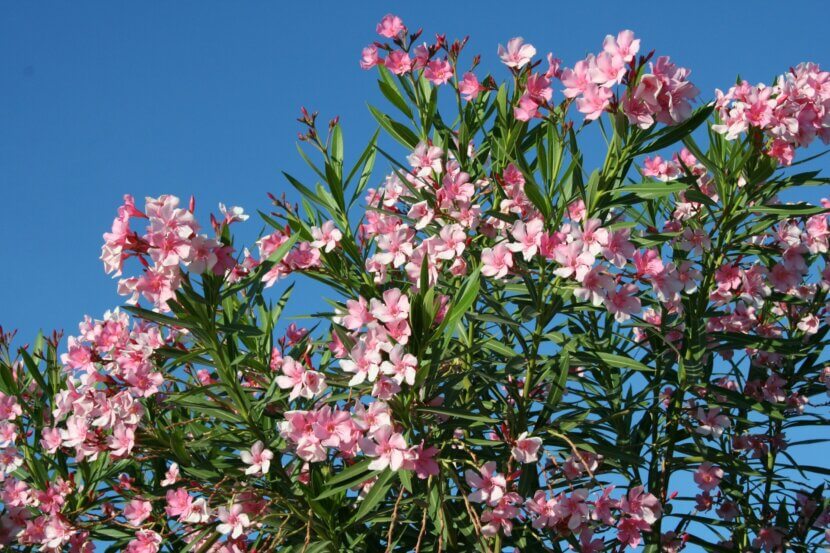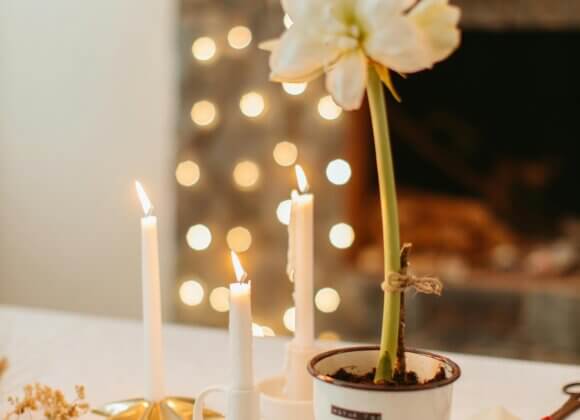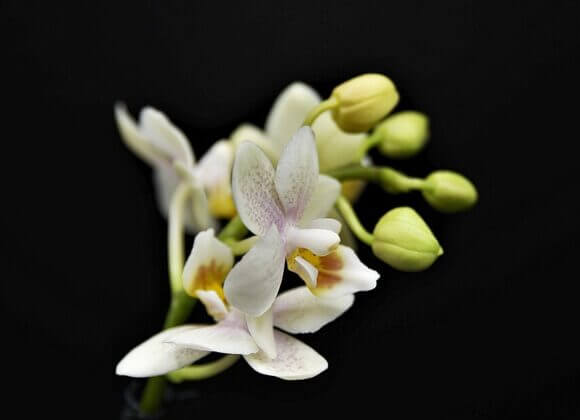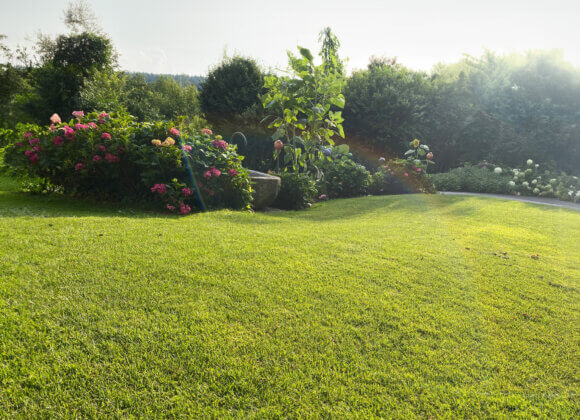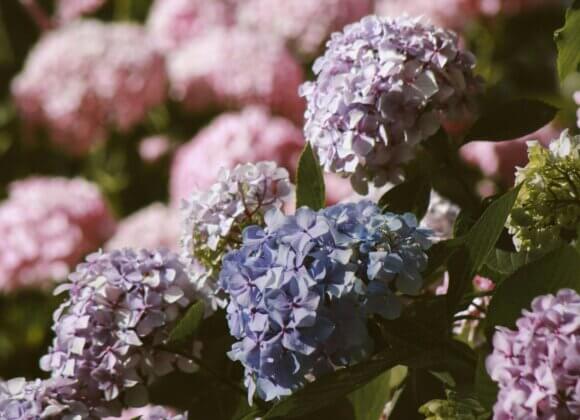It blooms lavishly in pink, white and apricot, defies heat and storms and exudes southern flair like almost no other plant: the oleander is the epitome of the Mediterranean lifestyle. But what does this robust beauty really need – and how does it overwinter here?
The oleander(Nerium oleander) is a child of the sun: it originates from the Mediterranean region, the Middle East and parts of Asia. There it prefers to grow on riverbanks, in dried-up streams and near the coast – in other words, in places where the soil may be damp but the heat and sun still dominate. No wonder it blooms in sun-drenched Italy between the lanes of the autostrada as if it were the most natural thing in the world. Its strong roots find deep reservoirs of moisture that are sufficient for it – but this is exactly what it often lacks in our patio pots.
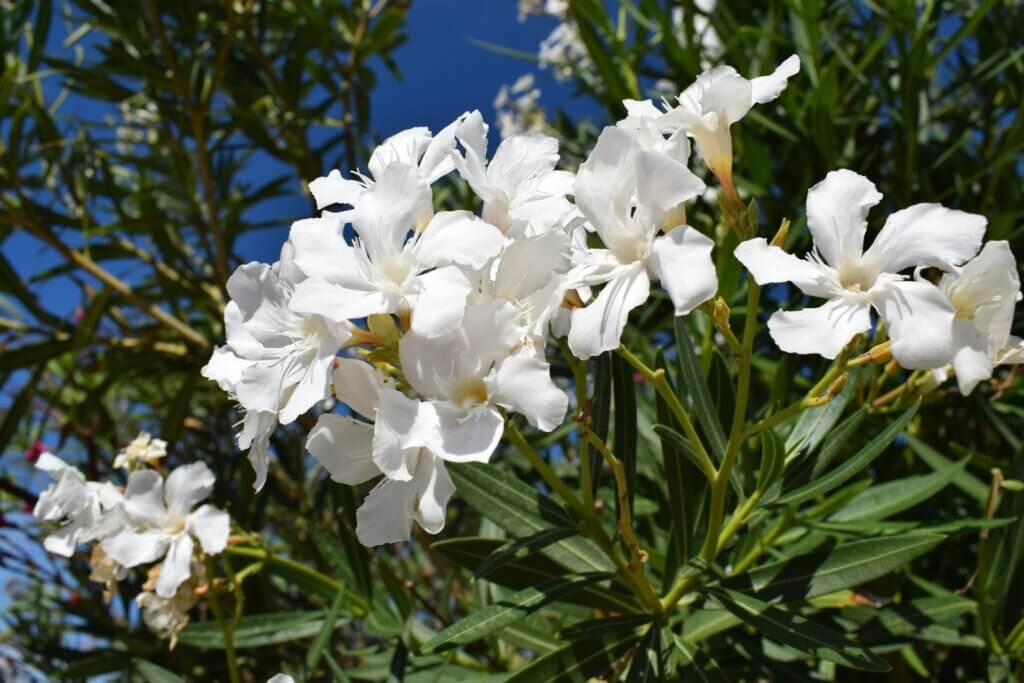
What the oleander loves – and what it doesn’t like
Light is its elixir of life: the oleander needs full sun, preferably six to eight hours a day. Wind hardly bothers it and it can cope with heat up to 40 degrees. What it does not like, however, are shady spots, draughty corners and poor soil without structure. A loose, mineral substrate with good water retention capacity is ideal – a mixture of garden soil, sand and expanded clay works well.
A regular supply of water is important. The oleander must never be allowed to dry out completely, especially in the hot season. A water reservoir under the pot can help. At the same time, it loves nutrients: During the flowering phase – usually from May to September in our latitudes – it needs weekly applications of fertilizer. A phosphorus-rich flowering plant fertilizer is ideal.
The right pot – plenty of space for deep roots
The oleander is a strong-rooted plant and needs space. Its pots should therefore be deep and heavy – this also prevents them from tipping over in the wind. Clay pots are ideal: they store moisture, keep the root area cool and have a Mediterranean look. Important: Avoid waterlogging, but the oleander allows a certain level of groundwater in the planter – it tolerates “wet feet” better than most of its balcony colleagues.
Why oleander thrives on the highway in Italy
Which always amazes us, but makes sense: In Italy, oleander grows between roadways because it gets exactly what it loves there: heat, sun, nutrient-rich soil due to dust and abrasion deposits, hardly any competition from other plants and no contact with frosty temperatures. The decisive factor is that although the soil there dries out on the surface, it stores enough water in deeper layers – similar to a dry stream bed. In our regions, we have to create this balance artificially.
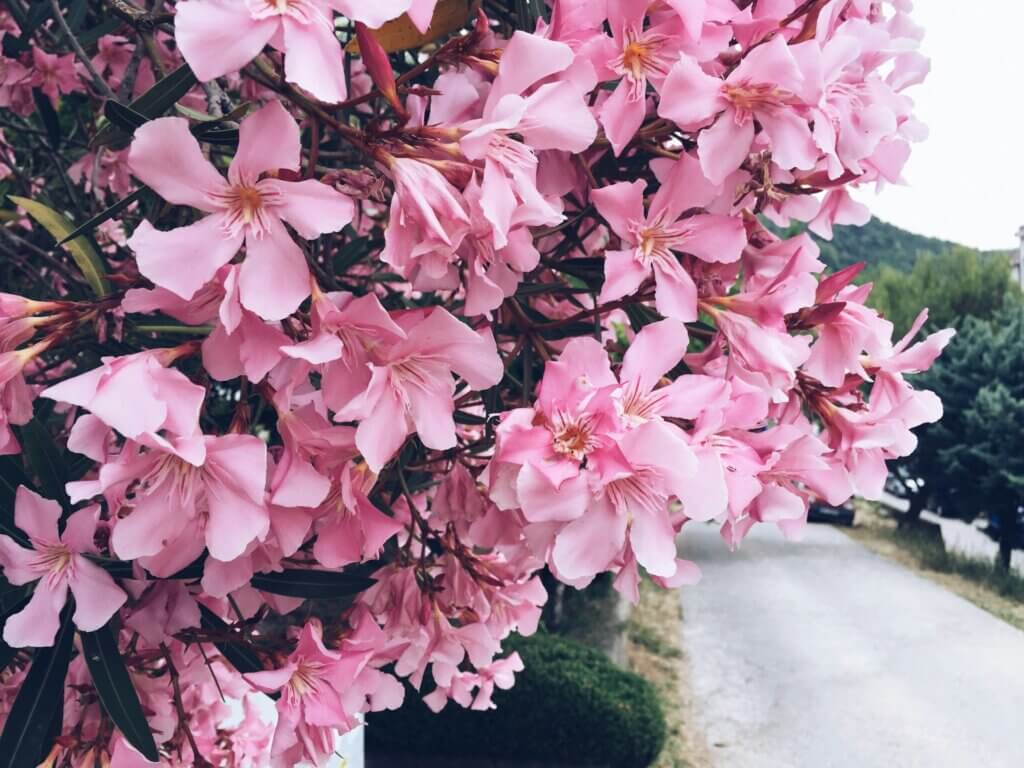
Winter dormancy – a delicate chapter for the oleander
The oleander does not like frost at all. Although it can withstand temperatures down to minus 5 degrees for a short time, it needs a frost-free, bright winter habitat in the long term. A cool conservatory or an unheated but light-flooded room with a temperature of 2 to 10 degrees Celsius is ideal. It suffers in dark cellars – without light it sprouts yellowed, weak shoots. In winter, it is hardly watered and not fertilized at all.
Radical pruning is worthwhile before wintering. This saves the plant energy, keeps it compact and provides less surface area for pests. Oleander is poisonous, so please wear gloves – all parts of the plant contain cardiac glycosides.
If you give the oleander light, warmth, fertilizer and a spacious pot, you will get a floral work of art full of southern elegance. It does not forgive neglect – but rewards loving care with a spectacular sea of flowers.
Related posts:
Caring for hydrangeas: The best tips for magnificent flowers
How to turn your garden into a paradise for bees and insects


